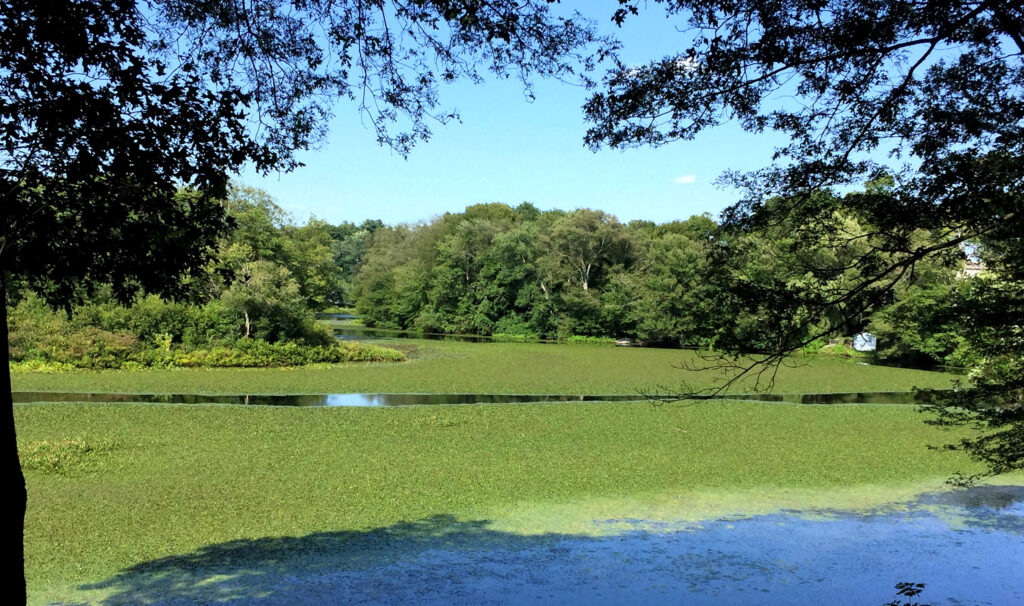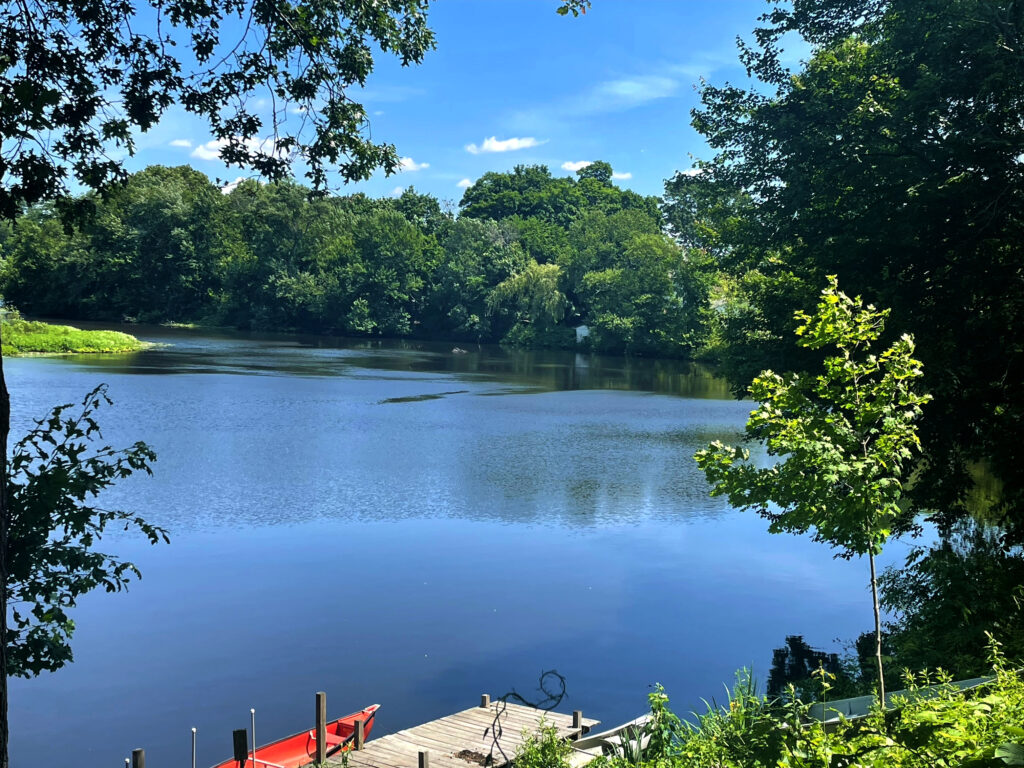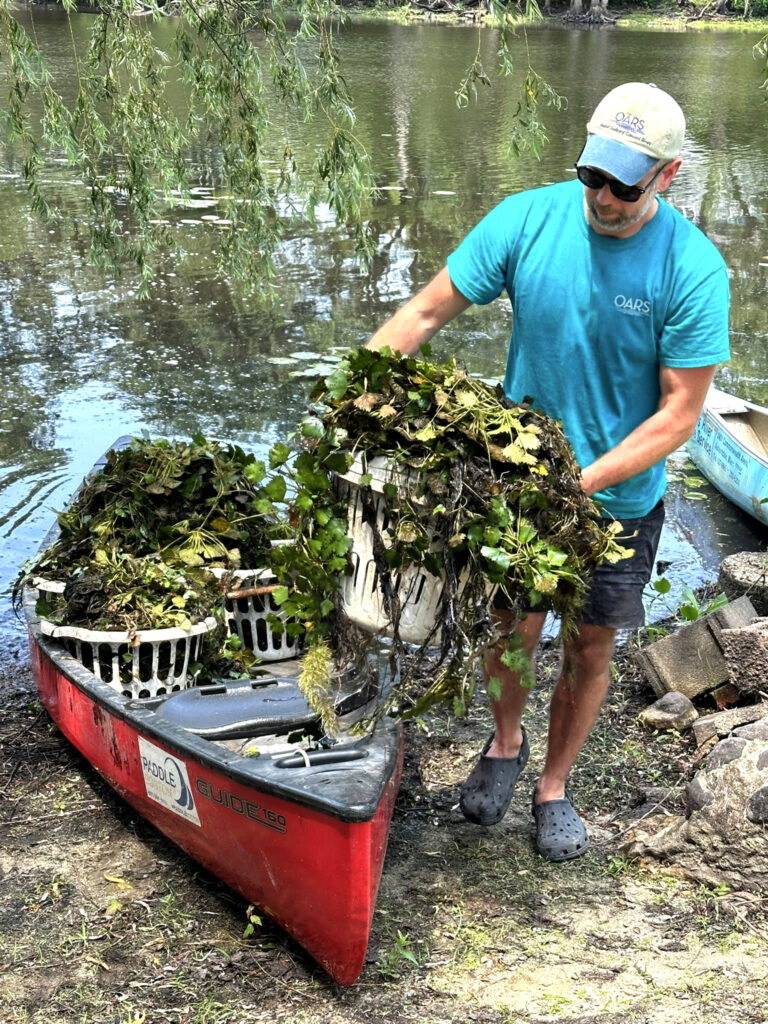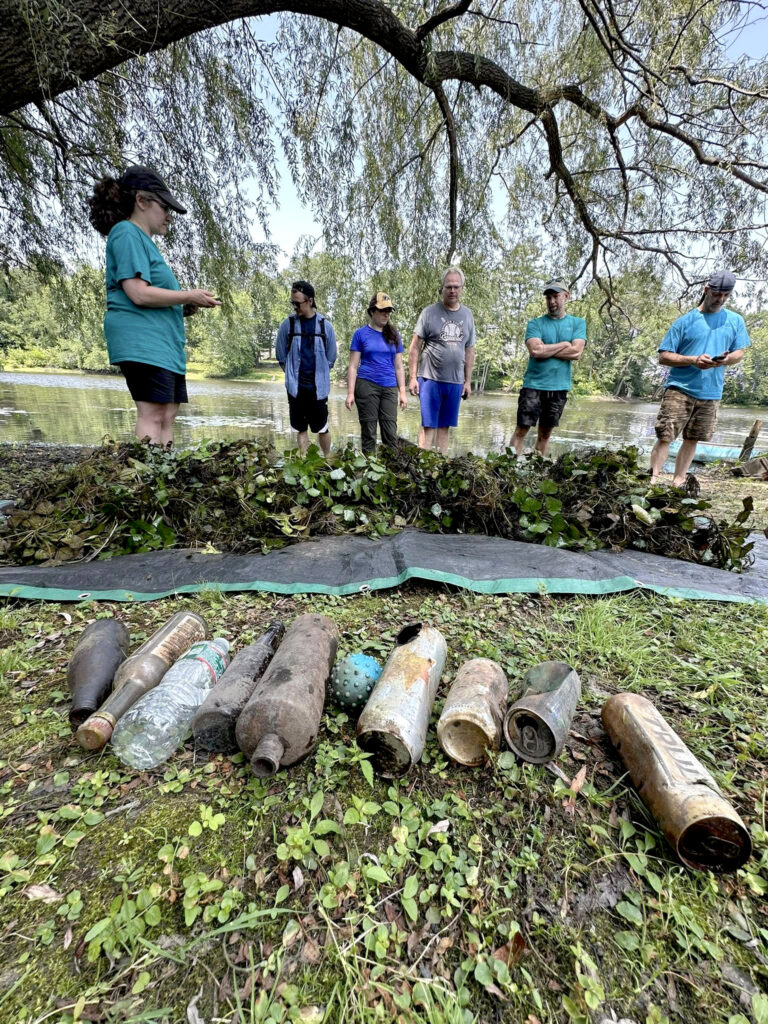PRESS RELEASE: Collaborative Action for a Cleaner, Healthier Sudbury River
July 15, 2025
by Sarah Kwan, Director of Communications and Development, OARS | July 15, 2025
FOR IMMEDIATE RELEASE
OARS 3 Rivers, the watershed organization for the Sudbury, Assabet, and Concord (SuAsCo) rivers, supports the upcoming herbicide treatment of invasive water chestnut on the Sudbury River, being conducted by the Concord Land Conservation Trust. This targeted effort is funded through a $15,000 grant from the Sudbury, Assabet & Concord Wild & Scenic River Stewardship Council (RSC) for the treatment of approximately 11 acres of dense water chestnut growth between Sudbury Road Bridge and just beyond the Route 2 Bridge.
OARS is an elected member of the Steering Committee of the SuAsCo Cooperative Invasive Species Management Area (CISMA), chairs the Aquatic Invasive Management Subcommittee (AIMS), and has worked for decades to address the growing threat of water chestnut in the watershed.
“Water chestnut is one of the most destructive invasive species in our rivers, choking out native ecosystems and making waterways impassable,” said Matt Brown, Executive Director of OARS and Co-Chair of the RSC. “We support the Concord Land Conservation Trust’s work to clear and restore the Sudbury River. Research shows that Clearcast is a safe and effective tool for water chestnut treatment when applied responsibly as part of an integrated management plan.”
Why Clearcast?
Clearcast is a widely used, targeted aquatic herbicide that contains imazamox, a compound absorbed by water chestnut leaves and stems to stop growth at the root level. It is considered safe for fish, birds, and aquatic life and is approved by the EPA for aquatic use. Treatments like this are essential when infestations reach levels too dense for hand-pulling to be effective.
In the Saxonville Impoundment on the Sudbury River in Framingham, Clearcast applications over seven years reduced water chestnut coverage from 98% to just 3%. Thanks to these sustained efforts, the community transitioned to hand-pulling only in 2024.
“Last year (2024) marked a significant milestone—for the first time in eight years, the Framingham Conservation Department and volunteers managed Water Chestnut through hand-pulling alone, with no herbicide application needed,” said Ron Chick, a long-time partner in invasive management. “The good news is that the supply of nutlets in the riverbed has diminished significantly, showing the long-term success of our previous Clearcast applications.”


Clearcast has also been successfully used in Hop Brook, sections of the Great Meadows National Wildlife Refuge, and other areas where infestations were once unmanageable by hand-pulling alone.
Integrated Management Approach: Herbicide + Hand-Pulling
OARS emphasizes that Clearcast is a tool to reduce infestations to a level where community-led hand-pulling becomes practical and sustainable. After herbicide application, long-term hand-pulling remains essential to prevent regrowth from seedbeds that can remain viable for up to 15 years.
Community hand-pulling efforts continue to thrive throughout the watershed, including on the Concord River. OARS recently hosted a successful pull in North Billerica, where volunteers reported a significant decrease in plant density compared to previous years.
“Our community-led hand-pulls remain a core strategy in the Concord River, where we’ve seen dramatic improvements thanks to sustained effort,” said Heather Conkerton, OARS Ecological Restoration Coordinator and CISMA Steering Committee member.


Join the Effort
OARS invites the public to join upcoming hand-pulling events throughout the summer. Information and event details are available at: oars3rivers.org/news-events/events-calendar/
For more information about water chestnut management in the SuAsCo watershed, including OARS’ full five-year management guidance, visit: oars3rivers.org/our-work/ecological-restoration/water-chestnut/
About OARS 3 Rivers
OARS is the watershed organization for the Sudbury, Assabet, and Concord rivers. Since 1986, OARS has worked to protect and restore these 3 rivers through science-based advocacy, community engagement, and restoration initiatives to ensure healthy rivers for people and wildlife.

For more information or to learn how you can support efforts to restore our rivers, please contact Sarah Kwan, OARS Director of Communications and Development, at skwan@oars3rivers.org.
Don’t want to miss out on getting the scope? Visit OARS’ press page: oars3rivers.org/news-events/press/

